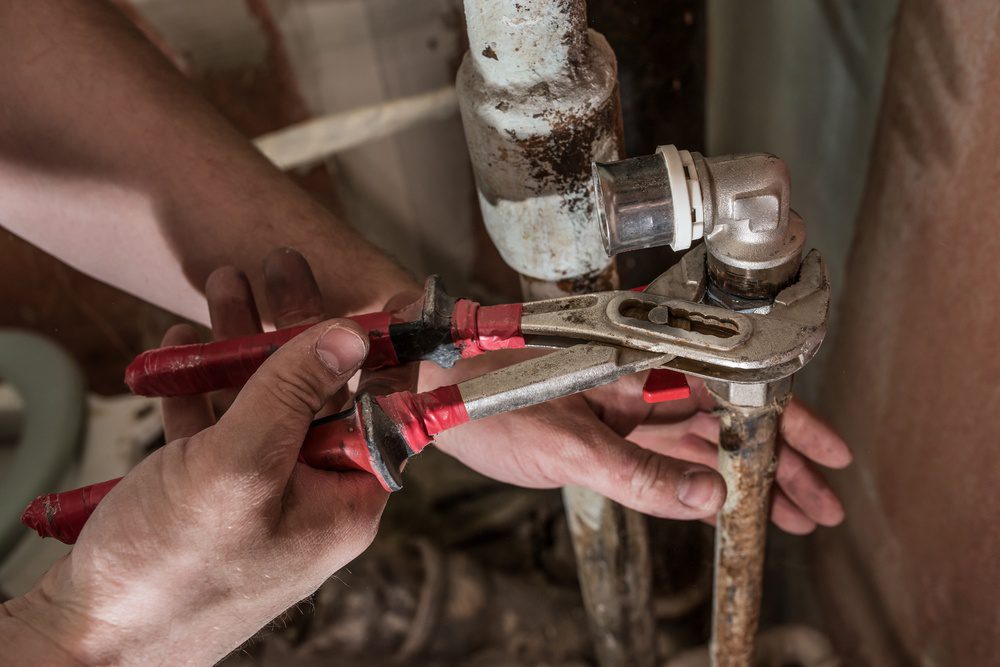
When it comes to plumbing repairs Jacksonville is a place where the maximum lifespans quoted for pipes are most likely not going to happen. Jacksonville water is harder, as is most of the water in the eastern areas of Florida. However, despite the increased need for plumbing repairs Jacksonville is not necessarily going to mandate early replacement. The following is a brief primer on when to repair your pipes versus when replacing them is a better idea.
Absolutely Replace Them
The age of your pipes is naturally going to be a determining factor of how much repair work they are going to need. However, there are two types of pipes that you should immediately replace because they represent a sizable health risk to you and your family. Because of this imminent health risk, you would be wise to replace the following types of pipes immediately even if they are in excellent condition.
Lead pipes are a type of piping that was commonly used during the early part of the 20th century. Of all plumbing repairs Jacksonville usage of lead piping is the most urgent because these types of pipes generally leak lead into your drinking water. This represents a clear and present risk to children of developing learning disabilities and neurological problems, as well as presenting the increased risk to anyone of developing cancer.
Another type of pipe that you would want to replace is the polybutylene pipe; which were used from the 1970s into the 1990s. While this type of pipe is not considered a health risk to your family, replacing this type of piping is a wise repair because this pipe is heavily prone to breaking.
Survey Regularly
If you purchased a home inspection with your home, you most likely had a walkthrough that involved a detailed check of your pipes with a professional plumber. This also most likely involved an estimation of your pipes’ age and what materials they are made out of. However, a routine check of your pipes, particularly in places where they are exposed and easy to access, is a wise piece of general routine maintenance. Just like checking your roof where you can see it easily, checking your pipes is a good idea where they are easy to see.
The older your home is, the more likely you are going to need to repair or replace your pipes. Even though brass or galvanized steel supply lines can last over a century, and cast iron drain lines can last as long or longer, if your home is more than 20 years old you may be dealing with deferred maintenance. If your home is more than 60 years old, it is wise to annually check any pipes you can access. It is better to get ahead of problems when they are not urgent and are less expensive than it is to be surprised by jets of water or raw sewage.
What to Look For
The telltale signs that your pipes have issues are bowing, bending, dimples, pimples, flaking, discoloration or staining. Any kind of irregularity represents the fact that your pipes are fighting a constant battle against water pressure and may be losing the fight. You can also use a piece of tape to check your plumbing system for a leak. Take the piece of tape to your water meter, place it over where the needle lies, and do not use any water for 6 hours. If the needle has moved, you either have something passively using water or a leak.
Good Places to Replace
A good strategy for considering the eventuality of replacing your pipes is to look for easy access points before making your decision. In a lot of cases, if you have easy access, you can replace your pipes with PEX or polyethylene xylene, which is flexible and relatively easy to join.
The first indicator of a problem is often leaks at joints. If there are numerous joints, it may be less expensive to simply replace it all, particularly if the system is old.
How Not to Test Water Lines
If your plumber suggests using an air compressor to test the strength and seals of your pipes, keep in mind that this works better for some kinds of systems than for others. The burst pressure for brass, for example, is 150 PSI. You can often test the ability of pipes to hold pressure with as little as 10 PSI, particularly if you are dealing with CPVC or chlorinated polyvinyl chloride.
Your plumbing system may be good for many years to come. However, keeping vigilant inspires far more confidence.

